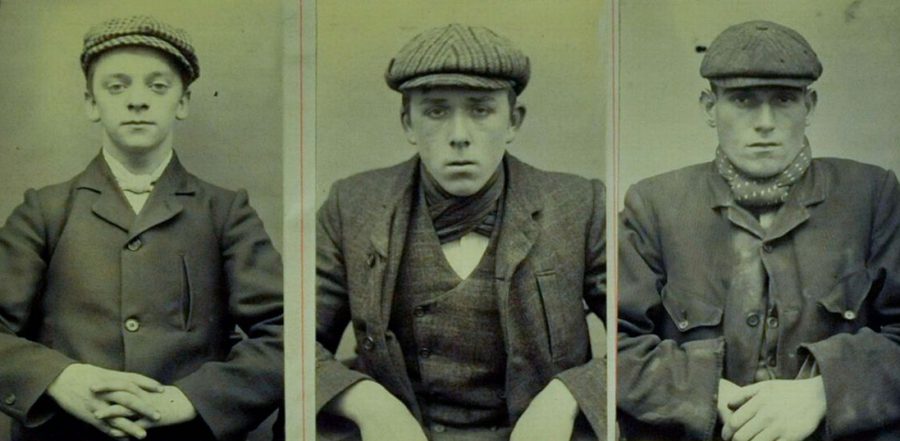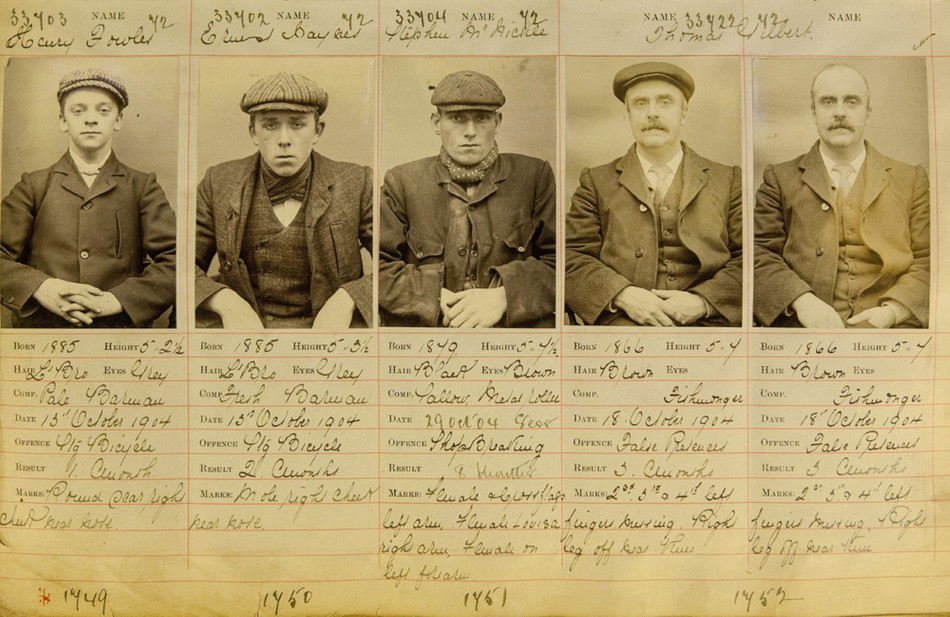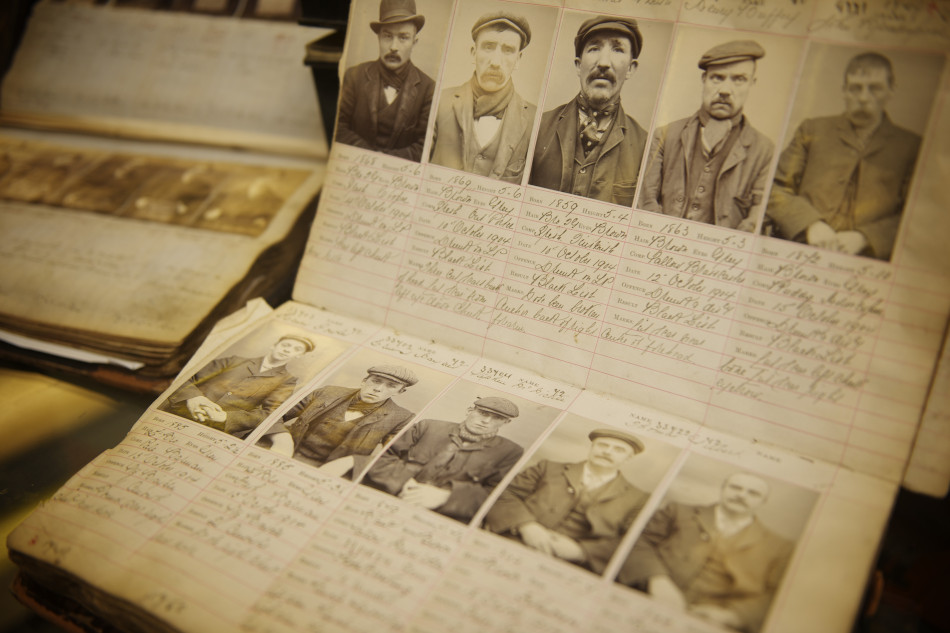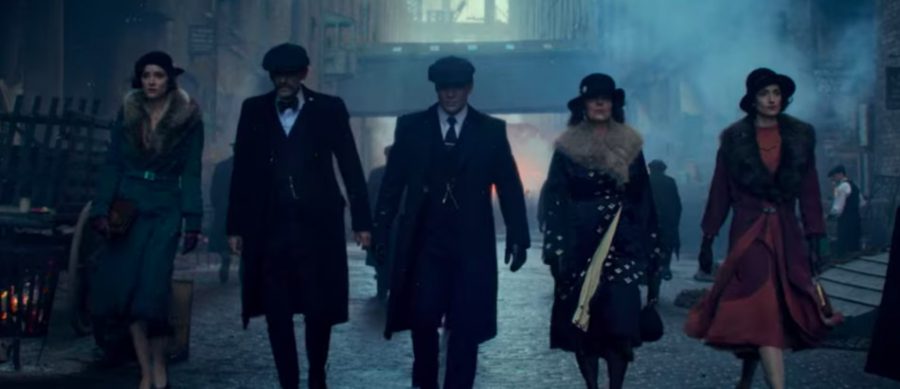Peaky Blinders TV Show

Steven Knight created the Peaky Blinders TV show, a historical crime drama set during the 1920s after the end of World War I. The show follows the Peaky Blinders gang and the family of gang’s leader as they run illegal bookmaking services in Birmingham.
Peaky Blinders features an all-star cast including Cillian Murphy as Peaky Blinders leader Thomas ‘Tommy’ Shelby, Tom Hardy as the violent leader of a gang in Camden Town, Sam Neil as an Irish Major who vows to destroy the gang, Adrien Brody as a New York mafia member and Aidan Gillan among others.
The show first premiered in 2013 in the United Kingdom and a total of four seasons have released. Creator Steven Knight revealed plans to extend the show to seven seasons in 2018, revealing he wants to tell the story of a family between two wars. Knight also revealed he wants the show to end with the first air raid siren in Birmingham on June 25, 1940.
After the first episode was premiered to a select audience at Birmingham Town Hall in July, Peaky Blinders season 5 will officially premiere on Sunday, August 25. The second episode of the show will air the next day on Monday, August 26, a bank holiday. All subsequent episodes will air every Sunday until late September.
The Real-Life Peaky Blinders
The real Peaky Blinders were a street gang that operated in Birmingham, England, between the late 1870s and beginning of the First World War. During this time, Birmingham, which was described as an overcrowded slum, was experiencing a slump as residents suffered extreme poverty. The slump sparked a dangerous wave of crime and gang violence erupted as youths fought to claim ownership of different areas around the city.
One of the most well-known gangs to emerge during this period was the Sloggers led by a man named John Adrian. However, the group later met their match with the rise of their rival gang the Peaky Blinders.
According to historians, the real Peaky Blinders gang was comprised of dozens of smaller groups as the name was a term for the various groups operating in the Birmingham area. According to a report by the West Midlands Police, the gangs consisted of “foul-mouthed young men” and some members of the gang were as young as 12 or 13. David Taylor, a 13-year-old gang member, was arrested by the West Midlands Police for carrying a gun and fellow gang member Charles Lambourne was arrested in 1905 at the age of 12.
However, the oldest and most powerful member of the gang was Thomas Gilbert, who also operated under the name Kevin Mooney. Gilbert was arrested in 1904 at the age of 38 and according to a West Midlands Police report, was recorded with missing fingers and a deep scar on his knee.
CRIMINAL ACTIVITY

While much of the television show’s portrayal of the gang see them commit strong violence and murder, the real Peaky Blinders gang weren’t half as violent. Instead, the gang mostly practised fraud, bribery, robbery, practice rackets, smuggling and illegal bookmaking. Reports from the late 1800s suggest that the gang also attacked civilians and rivals and assaulted police. A Historian Professor from the University of Leeds indicated that the gang focused more on street fighting, robbery and racketeering rather than more organised crime as depicted in the television show.
Examples of their real-life crimes include 19-year-old gang member Harry Fowler who was arrested for stealing a bike and attempting to sell it. Meanwhile, fellow gang member Stephen McHickie was arrested for breaking into a shop close to his home. Thomas Gilbert, meanwhile, faced charges over “false pretences” after his arrest, suggesting he frequently defrauded victims.
THE GANG’S DECLINE
Eventually, Peaky Blinders’ meddling into racecourses caught the attention of rival gang the Birmingham Boys, sparking a war between the two groups. This led families connected to the real Peaky Blinders gang to move away from the city centre and into the countryside. This allowed the Birmingham Boys, also known as the Brummagem Boys, to take over from the former gang. By the 1930s, the Peaky Blinders had completely ceased, but their name was used as a term to describe the gangs that followed them.
During this time, the Birmingham Boys reportedly controlled racecourses throughout the Midlands. They even partnered with fellow London gang boss Charles ‘Wag’ McDonald to set up a secondary base in the city, focusing on racetracks in the south of the country. This eventually sparked a war between the Birmingham Boys and the Sabini gang for the control of racecourses and gambling. The war led to the death of at least eight gang members, but the Sabini gang ultimately won and gained power in the 1930s.
CRIMINAL FASHION: WHY WERE THEY CALLED PEAKY BLINDERS?
One of the biggest rumours surrounding the Peaky Blinders gang was that members would stitch razor blades into the peak of their flat caps. The gang members would allegedly use these razors as weapons, swiping at their victims’ faces and cutting off flesh where they could. Some rumours have even suggested that Peaky Blinders gang members would try to blind victims by headbutting them with their cap. However, the stories have since been debunked but more on that later.

What historians have agreed on, however, is that the Peaky Blinders gang members were extremely fashionable. Members of the group wore the iconic flat caps as well as silk scarves, thick wool jackets, bell-bottom trousers and heavy boots. Historians have stated that the Peaky Blinders gang members chose the outfit to add “class” to their crimes and to help distinguish themselves from rival gangs.
It’s reported that gang members’ girlfriends also wore classy clothing such as expensive tailored garments, pearls and silk handkerchiefs. However, it has been suggested that the clothing was used to try to hide marks of domestic abuse, with one supposed girlfriend reportedly saying: “He’ll pinch and punch you every time he walks out with you. And if you speak to another chap, he don’t mind kicking you.”
Gambling In The 1800s
The Peaky Blinders gang in the TV show were well known for participating in illegal bookmaking, a move which led to their eventual demise at the hands of the Birmingham Boys. While gambling is readily available to us today, both online and at real-life betting shops or at horse racing courses, it wasn’t back in the 1800s.
After the UK government introduced the Gaming Act 1845 and the 1853 Gambling Act, all forms of commercialised gambling were banned for the working class except for on-course betting at horse race meetings. The law prompted several bookmakers to move to Scotland, France or Holland where they reportedly conducted their services via post. Many bookmakers operated illegally out of private housing and employed runners who would collect bets and pay winnings or deduct lost bets. The new laws also led to the rise of on-street betting.
Around 1906, the Street Betting Act was passed, criminalising gambling in public spaces. However, this only boosted the rate of illegal and unregulated gambling throughout the United Kingdom. All of this changed with the introduction of the Betting and Gaming Act of 1960 which legalised off-course betting and saw the launch of betting shops across the United Kingdom.
Gambling has expanded hugely since then. It’s readily available on the internet, allowing users to register and play at regulated online casinos where they can win while playing games such as slots, table and live casino games. Sports betting has expanded now to include even more sports and additional betting practices such as Placepots, which allow punters to win large sums across multiple races.
Fiction Vs Reality: How Accurate is Peaky Blinders?

Peaky Blinders is currently one of the most popular television shows around, but how close is it to reality? As it turns out, pretty far. One of the most significant differences between the real Peaky Blinders gang and the television show is that the gang operated between the late 1890s and early 1900s, but the show is set during the 1920s shortly after the First World War.
The show’s main character, Cillian Murphy, also did not exist in real life. Thomas Shelby was explicitly created for the show, but comparisons have been made between the character and real Peaky Blinders gang member Thomas Gilbert.
In addition, the real Peaky Blinders gang were not as violent as their fictional counterparts, since they mostly stuck to robbing and fraud. It’s also thought that the gang in the Peaky Blinders TV show were based more on real gang the Birmingham Boys who dabbled more in gambling and controlled most of the UK’s racecourses.
Historian Professor Carl Chinn revealed in an interview with the Birmingham Mail that the gang didn’t actually stitch razor blades into their flat caps. He pointed out that back then, razor blades had only begun to circulate and were regarded as a luxury item, not something the working class would possess. He also revealed the notion was brought in from John Douglas’ novel A Walk Down Summer Lane and was made popular shortly after.
Chinn explained that the word “peaky” at that time referenced the gang’s peaked flat caps while “blinder” was a slang term used to describe something of dapper appearance. It’s also rumoured that the name came from the gang’s behaviour where they frequently snuck up behind victims and pulled their hat down over their face so they couldn’t see who was robbing them.





